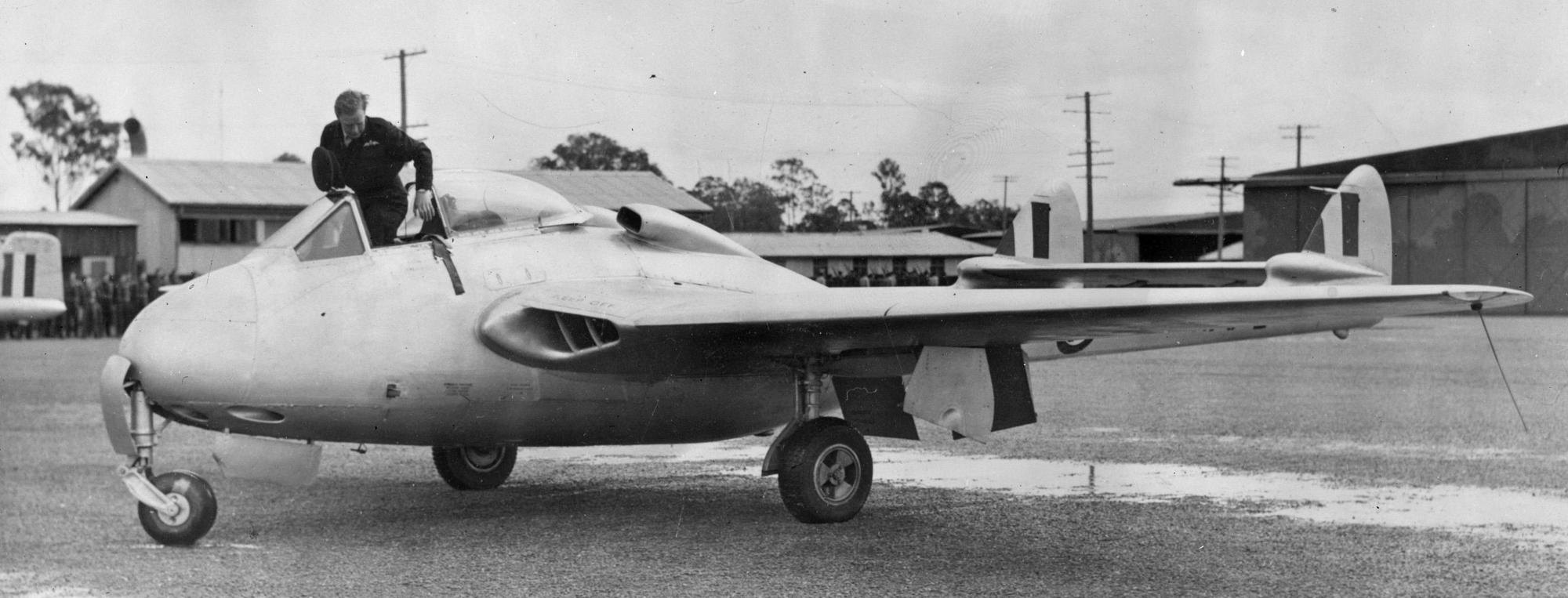A friend recently sent me a photo of the single seat DH Vampire Mk 30 used by the RAAF in the early Fifties. I flew them in 1953. . The dual Vampire Mk 33 came in later. No dual in those days.
See:
https://www.radschool.org.au/magazines/Vol58/Page16.htm

Test Pilot Brian "Black Jack" Walker test flew the RAAF version during his investigation into the diving characteristics of the Vampire after several fatal accidents caused by shock waves forming on additional engine air intakes on top of the fuselage in the Nene engine. The intakes were called Elephant Ears. I read Walkers book many years ago. It turned out that shock waves on those intakes occurred around 0.78 Mach which affected the tail plane and elevators, resulting in loss of elevator effectiveness. The aircraft nosed over and wasn’t recoverable unless the pilot acted quickly by extending the dive brakes and closing the throttle to prevent speed build up as soon as the slightest nose down tendency became apparent.
Walker came close to going in during the initial tests. He had rolled the single seat Vamp on its back around high altitude (41,000 ft comes to mind) and deliberately went into a steep dive until he felt the sharp nose down trim change. Too late he found the aircraft going ever steeper and not responding until below about 13,000 ft. His description in his book was terrifying. Remember those early Vamps did not have bang seats and there was no hope of jumping out at high speed. The fix was to remove the intakes situated behind the cockpit and place them under the fuselage. That made the Vamp pitch up at high Machs which was safer. We used to enjoy rolling the revised Vamps and pulling through and feeling the sudden pitchup when vertical.
Because some of the pilots on the fighter course were very inexperienced (230 hours total time when going on to the single seat Vamps (no dual Vamps then) it was easy for them not to recognise the initial symptoms followed by sharp nose down trim, as leading to danger. I believe the RAAF lost several pilots - all of whom were newly graduated. If I recall correctly two Vamps went in vertically while in close formation recovering from aerobatics. . Another went in while diving on another Vamp during a practice dog fight. When I arrived at the Williamtown in February 1953 the prangs had occurred several months earlier.
From then on, we were introduced to Mach runs after about four flights. We flew in formation with an instructor flying the second Vampire.He would order us into a dive and formate closely on your aircraft. Bad luck if you were in cloud. As soon as the instructor felt the first symptoms of nose down trim he would tell the student in the other Vampire to extend dive brakes and throttle back. I did my Mach run on 16 March 1953 in single seat Vamp A79-199. My instructor in the other Vampire was flying Officer “Blue” Philp DFC recently returned from Korea. Lovely bloke. I never felt the nose down trim so I suspect Blue was a bit twitchy and called his warning a bit early in case I was slow to react. A wise precaution.
One student had a close shave during his single pilot navigation exercise cross country trip in IMC and found himself into an inadvertent loss of control situation in turbulence (?) The Vampire went into a steep dive during attempted recovery. He went through Critical Mach (I think it was 0.78? nd was lucky to survive, recovering at 1500 ft He said the elevator had locked solid until in the thicker air.